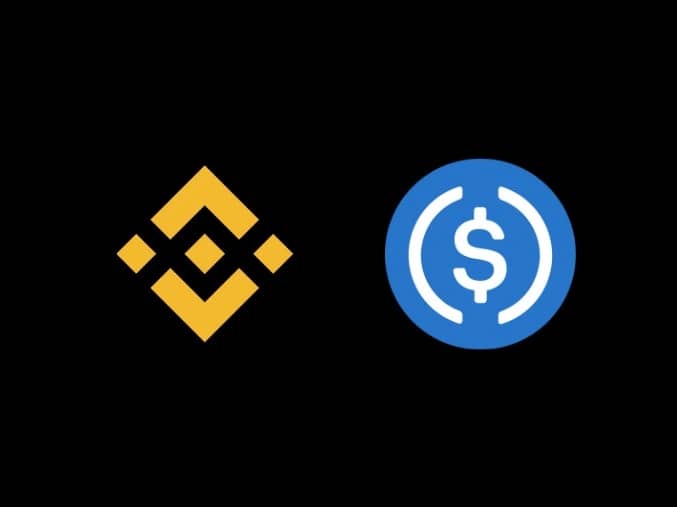订阅 wiki
Share wiki
Bookmark
Binance Bridged USDC (BNB Smart Chain)
Binance Bridged USDC (BNB Smart Chain)
Binance Bridged USDC (BNB 智能链) 是 BNB 智能链上 USD Coin (USDC) 稳定币 的一种表示形式。它作为一种与美元挂钩的代币,旨在 BNB 链 生态系统中使用,与原生 USDC 主要所在的 以太坊 网络相比,它能够以更低的费用和更快的速度促进交易和参与 去中心化金融 (DeFi) 应用程序。
概述
BNB 智能链 上的 Binance Bridged USDC 是将已建立的 加密货币(尤其是 稳定币)桥接到不同 区块链 网络这一更广泛趋势的一部分。此过程允许用户在提供独特优势的生态系统中 利用 诸如 USDC 之类的资产的稳定性,例如通常与 BNB 智能链相关的较低交易成本和较高吞吐量。该代币通过桥接机制创建,其中原始链(如 以太坊)上的原生 USDC 被锁定,并在 BNB 智能链上铸造等量的 Binance Bridged USDC。相反,在 BNB 智能链上销毁桥接代币会释放原始链上的原生 USDC。
诸如 Binance Bridged USDC 之类的桥接 稳定币 的存在对于跨链互操作性和流动性至关重要。它使 BNB 智能链 上的用户和协议能够访问广泛认可和使用的稳定币,而无需为每笔交易直接与其原生网络交互。这种集成支持 BNB 链 DeFi 领域内的各种活动,包括在 去中心化交易所 上进行交易、提供流动性以及参与借贷协议。该代币旨在保持与美元挂钩的价值,并由原生 USDC 的发行方 Circle 持有的储备金支持。
技术和功能
Binance Bridged USDC 作为 BEP-20 代币在 BNB 智能链 上运行。BEP-20 标准是 BNB 智能链上的代币标准,它定义了代币的规则,类似于 以太坊 的 ERC-20 标准。这种兼容性使其能够与 钱包、去中心化应用程序 (dApp) 和构建在 BNB 智能链上的智能合约无缝交互。
主要技术方面和功能包括:
- BEP-20 标准: 遵守 BNB 智能链代币标准可确保在生态系统内的广泛兼容性 [1]。
- 桥接机制: 该代币通过跨链桥创建,该跨链桥锁定其源链上的原生 USDC,并在 BNB 智能链上发行等量的代币。此过程由 Binance 管理,Binance 充当桥接运营商 [2]。
- 高可扩展性: 利用 BNB 智能链的架构,即使在网络活动高峰期,也可以快速处理涉及 Binance Bridged USDC 的交易 [2]。
- 低交易费用: 与 以太坊 等网络相比,BNB 智能链上的交易通常会产生较低的 gas 费用,从而使与 DeFi 协议的转移和交互更具成本效益 [2]。
- 跨链兼容性: 桥接过程允许在原生 USDC 链和 BNB 智能链之间移动价值,从而增强互操作性 [2]。
效用和用例
Binance Bridged USDC 在 BNB 智能链 生态系统中具有多种用途,主要围绕提供稳定的交换媒介和价值存储。
主要用例包括:
- 交易: 在 BNB 智能链上的 去中心化交易所 (DEX) 上用作交易对,允许用户在 Binance Bridged USDC 和其他 加密货币 之间进行交换 [3]。
- 流动性提供: 用户可以将 Binance Bridged USDC 存入 DEX 和其他 DeFi 协议上的流动性池中,以赚取交易费用或收益耕作奖励。这有助于减少交易者的 滑点 [2]。
- 借贷: 该代币可用作 BNB 链生态系统中去中心化借贷平台上的 抵押品 或借入资产 [2]。
- 支付和转账: 促进 BNB 智能链网络内快速且低成本的价值转移 [2]。
- 质押: 参与接受 稳定币 的 质押 池以赚取被动收入 [2]。
- NFT 市场: BNB 智能链上的一些 NFT 市场可能会接受 稳定币(如 Binance Bridged USDC)进行购买 [2]。
代币经济学
作为一种桥接 稳定币,Binance Bridged USDC 的 代币经济学 直接与原始链上原生 USDC 的供应量和桥接机制相关联。BNB 智能链上的供应量旨在由锁定的原生 USDC 以 1:1 的比例支持。最大供应量是不确定的 (∞),因为供应量取决于桥接到 BNB 智能链的 USDC 的数量 [3]。
市值 的计算方法是将当前价格乘以 流通供应量 [5]。完全稀释估值 (FDV) 是理论市值(如果总供应量都在流通中),计算方法是将当前价格乘以总供应量 [6]。对于 Binance Bridged USDC,市值和 FDV 大致相等,因为流通供应量接近总供应量 [3] [2]。
交易所和交易
Binance Bridged USDC 主要在 BNB 智能链上运行的 去中心化交易所 (DEX) 上进行交易。
主要交易所和交易对包括:
- PancakeSwap V3 (BSC) [7]
- Uniswap V3 (BSC) [8]
- Uniswap V4 (BSC) [9]
- BSC-USD/USDC [3]
- THENA FUSION [10]
- BSC-USD/USDC [3]
Binance Bridged USDC 的价格是通过使用成交量加权平均公式聚合多个交易所和市场的数据来计算的 [5]。
历史和里程碑
Binance 将桥接的 USDC 引入 BNB 智能链,以增强 稳定币 的流动性,并为用户提供一种低成本的替代方案,以便在该生态系统中与与美元挂钩的资产进行交易 [2]。这是 Binance 将各种资产桥接到其原生链的更广泛努力的一部分。
正在进行的开发包括与各种 DeFi 协议的集成,以及未来可能对跨链功能的增强 [2]。
安全性
Binance Bridged USDC 的安全性依赖于以下几个因素:原生 USDC 稳定币 及其储备金的底层安全性、Binance 运营的桥接机制的安全性以及 BNB 智能链本身的安全性。
- USDC 储备金: 原生 USDC 由 Circle 发行,旨在由现金和短期美国国债组成的储备金支持 [11]。
- 桥接机制: 桥的完整性对于确保桥接代币得到锁定的原生代币的准确支持至关重要。Binance 桥接机制的具体技术细节和审计有助于其安全性 [2]。
- BNB 智能链安全性: BNB 智能链采用权益证明权威 (PoSA) 共识机制,依靠验证者来保护网络。Binance Bridged USDC 的代币合约包括管理控制,例如冻结或铸造代币的能力,这些都是其运营安全的一部分 [2]。
虽然该代币继承了其底层组件的安全性方面,但用户应注意与跨不同 区块链 桥接资产相关的风险。 [18] [19] [20]
发现错误了吗?
